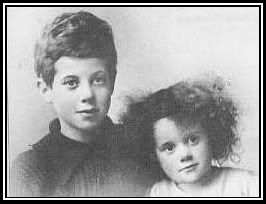Born this date in 1890 Arthur Stanley Jefferson has long been one of the most beloved comedy figures in film. With his partner and dear friend Oliver Hardy they are, for my money, the best comedy team in film.
Having worked together occasionally they finally became a team in the mid twenties when they were still making silent films. As they worked on Stan became the creative force behind the team while Ollie showed up to work and when they weren't filming was happy enough playing golf. Out of this partnership there came a lifelong friendship that is obvious in their films. In addition to being so funny their affection shows which I believe gives another dimension to their work that, for me, lacks in the films of Abbott and Costello for instance.
They also migrated the journey from silent to sound better than any comedy team/comedian of their time. The advent of sound gave them an entire new way to express their humor. Chaplain didn't even really attempt a sound film until 1940. Buster Keaton's problems coincided with sound coming in and the two together relegated him to a lower level of films. Harold Lloyd may have come close to Stan and Ollie but that, I guess, is a matter for debate. Their popularity ever growing they not only made more films but often made several foreign langauge versions of the same film.
They were always dignified. Even when their world came down around them they showed that they may be bowed but were unbroken. Polite and helpful to a fault, most of the time, it was their inability to get anything done, much less right, that added to their appeal. Whether planning a party, moving a piano, installing a radio aerial or finding a way to sneak out for the evening they were going to get it done if it killed them. Sometimes it nearly did. Their "Kneesy, Earsy, Nosey" bit has been entertaining me for years as I, being one of the few to have mastered it, have watched the futility of others trying to learn. I have not, however, accidently lit my thumb as a lighter.
After their film career ended (save for the unfortunate "Utopia") Stan and Ollie toured England to sell out crowds several times until Oliver took sick. He finally died in 1957. Stan continued to plan and write as if there was another project around the corner. Stan Laurel pased away in 1965.
Ah, that smile, that hair. Thank you Stanley.


